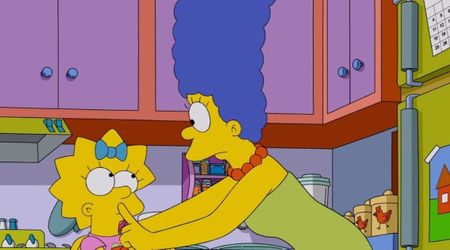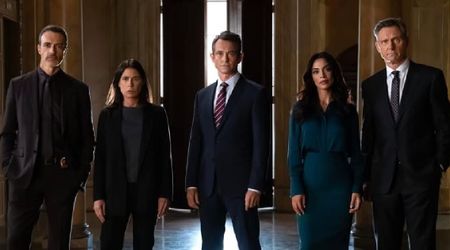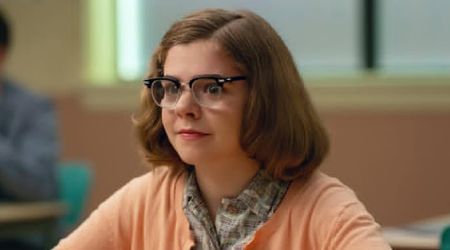'Skin: A History of Nudity in the Movies': Fatty Arbuckle to Clara Bow, sex scandals that rocked Old Hollywood

Hollywood's relationship with on-screen nudity has been rather hot and cold. Nudity in films has been around since the onset of the motion picture, and even before with the Lumiere brothers' invention of the cinematograph. Directed by Danny Wolf, 'Skin: A History of Nudity in the Movies' is a two-hour documentary film that chronicles the history of nudity in films to the present day. According to cinema's definitive timeline, the fascination with nudity emerged almost as instantly as the medium was created. From the very beginning, it was perceived by filmmakers including Eadweard Muybridge, Cecil DeMille, and D W Griffith as being natural selling points. Men and women have been captured on film in all their naked glory since the late 19th century.
For a while, and particularly during the silent era that lasted from 1891 to 1929, nudity was portrayed through a cinematic experience as long as it had a redeeming quality. But that came to an end in 1934 when the Motion Picture Production Code, 'Hays Code' began regulating obscene and vulgar content in films as they deemed fit. This in turn gave rise to the rating system, where films were rated as R or X provided they had scenes of nudity. On-screen nudity, however, also hit a brief roadblock in the pre-code era when various sex scandals made tinseltown headlines. Although Old Hollywood is known for its glitz and glamor, a lot of underlying shocking events unraveled behind its perfect facade.
Hollywood has always been viewed as a sexed-up town, oozing pheromones all over the place and full of attractive young people engaging in raunchy and titillating illicit liaisons. The rumor and scandal mill, especially associated with sex, has been running since the early days of the golden era. Here are five stars of Old Hollywood who were embroiled in sex scandals that have carried on notoriety to the present day.
Roscoe 'Fatty' Arbuckle

The first major Hollywood scandal happened in the early 1920s, involving comedian and the first million-dollar star, Roscoe 'Fatty' Arbuckle. He was considered second only to Charlie Chaplin in the silent era for his impeccable talent in entertaining. But his life was turned upside down by a tragedy that followed him like a dark cloud for the rest of his life. Arbuckle's roommate had thrown a party in their suite, and a fairly unknown actress, Virginia Rappe, had been in attendance. They ended up in a hotel bedroom together, and minutes later, she was heard screaming. Guests rushed in to find Rappe writhing in agony and yelling at the onlookers "he did this to me." She died only a few days later with a ruptured bladder, and Rappe's friend said that Arbuckle had raped and accidentally killed her. He was charged with manslaughter and was eventually acquitted after three trials. However, the media never let him live it down, publishing one unfounded story after the other, and his career took a huge hit. He only returned to the screen in 1932.
Greta Garbo and Marlene Dietrich

Bisexuality was met with disgust and scorn in Hollywood in the 1920s, and it carried on for a long time after. It was considered such a sexual taboo, despite all of the explicit scenes and nudity portrayed in cinema during the time, that it was deemed a dirty word in showbiz. In the late 1920s, rumors swirled that Hollywood sweethearts Greta Garbo and Marlene Dietrich were having an illicit affair, and to refute the claims, the actresses denied having ever met each other. Both Garbo and Dietrich were A-listers at the time having each earned an Academy Award nomination in the 1930s. Years later, intensive research by author and film historian Diana McLellan found evidence of a possible affair of the two actresses during the filming of the 1925 German film 'The Joyless Street.
Clara Bow

Clara Bow's reputation preceded her in the roaring twenties. The Hollywood megastar and 'It Girl', Bow was known worldwide as a sex symbol. Had she been actress now, her posters would have been up on the walls of every adoring male fan. Bow was the first actress in Hollywood to openly flaunt her sex appeal, and as a result, became the most talked-about socialite in Hollywood. She was so revered and emblematic of sexual freedom for women everywhere that she had a fan in Louise Brooks in the 1920s, Marilyn Monroe in the 1950s and Madonna in the 1980s. However, the majority of her acting career was overshadowed by the scandalous stories that followed her. While many of them were just dismissed as Hollywood legends, Bow was never one to feed fuel to the fire.
Bow eventually and successfully made the transition from silent films to talkies after 1927. A raging and unconfirmed rumor that did surround the actress was her involvement in various salacious sexual acts, including one of the biggest taboos there is, Beastiality. Off-screen she was also rumored to be engaging in affairs with actors Gilbert Roland and Gary Cooper, director Victor Fleming, a married doctor named Earl Pearson and Harry Richman. The gossip about her took on an even perverse light when the tabloid Coast Reporter claimed that she was an exhibitionist and also suggested that she had sex in public, threesomes with prostitutes, and turned to animals when no human could satiate her carnal desires.
Thomas Ince

Thomas Ince was a producer and director, driven by his ambition of filmmaking, and was even among the early pioneers of silent films. He established the company which became Culver City Studios in 1915, along with D W Griffith and Mack Sennett. The scandal that erupted about the director surrounded the mysterious circumstances of his death during his birthday party aboard the yacht Oneida, which belonged to the newspaper magnate William Randolph Hearst. The party guest list included Charlie Chaplin, film actress Marion Davies (Hearst's mistress), and gossip columnist Louella Parsons. The atmosphere aboard the yacht had been far from calm, as Ince and Hearst had been engaged in a heated discussion over business, while Chaplin's presence perturbed Hearst who was painfully aware of the 'City Lights' actor's romantic interest in his mistress.
It was the era of Prohibition, and while alcohol was not readily available, there was bootlegged liquor aboard Hearst's yacht and copious amounts were consumed that night. According to legends, Hearst shot Ince in the head twice by mistake, when he was really going for Chaplin. The story goes that Hearst suspected Davies and Chaplin were having a secret affair, and he had invited both of them on board his yacht to keep tabs on them. He supposedly found the two in a compromising position and brought out his gun. Davies's incessant screaming aroused Ince from his sleep and he rushed to scene, taking the bullet from Chaplin amid the altercation that ensued. The scandalous account, however, was a colorful picture painted by Davies' secretary Abigail Kinsolving who claimed that Ince had raped her over the weekend onboard the yacht.
This was stirred by an unmarried Kinsolving giving birth to a baby, several months later, and dying shortly in a mysterious car accident near the Hearst ranch. Two of Hearst's bodyguards found her body and a suspicious-looking suicide note. Her baby girl had been conveniently sent to an orphanage supported by Davies. Chaplin always denied his presence on the yacht that day and many published reports have cited "acute indigestion" as the cause of Ince's death. But the rumors had been circulating of Ince's death being a result of foul play, especially after it became public knowledge that he was cremated without an autopsy. What happened on the yacht in November 1924 is still the basis of speculation, to this day.
'Skin: A History of Nudity in the Movies' will be available on-demand on August 18.










